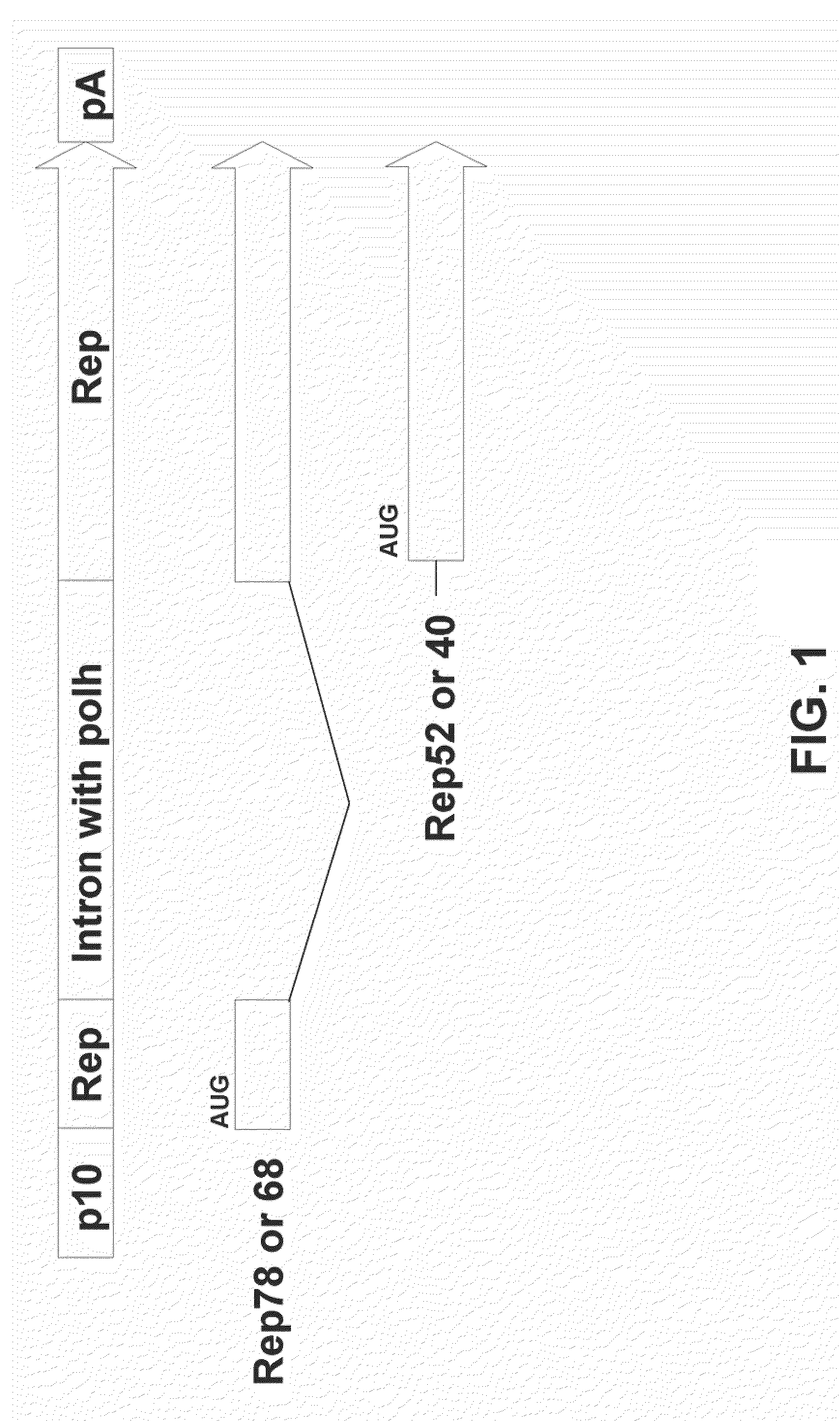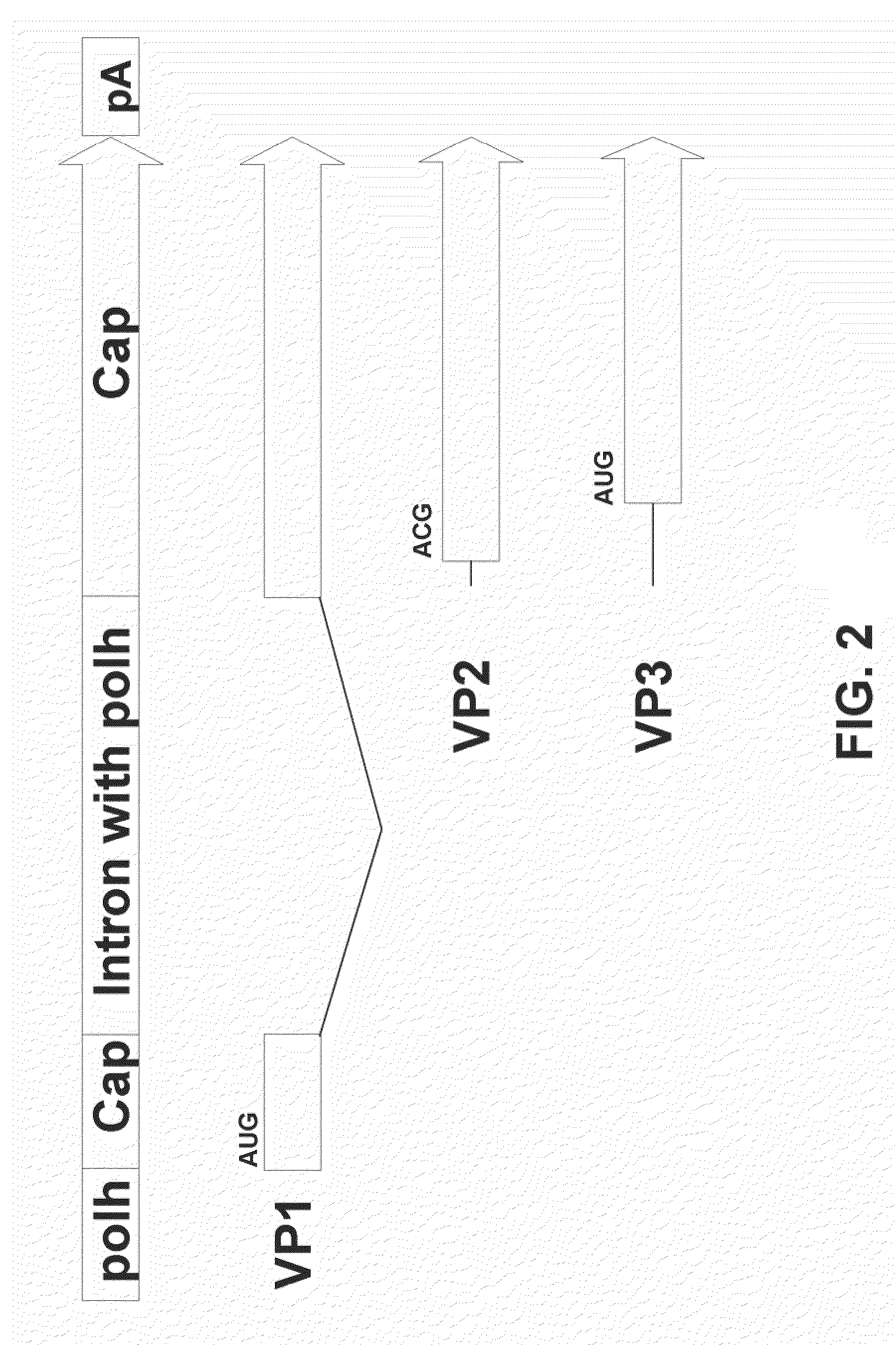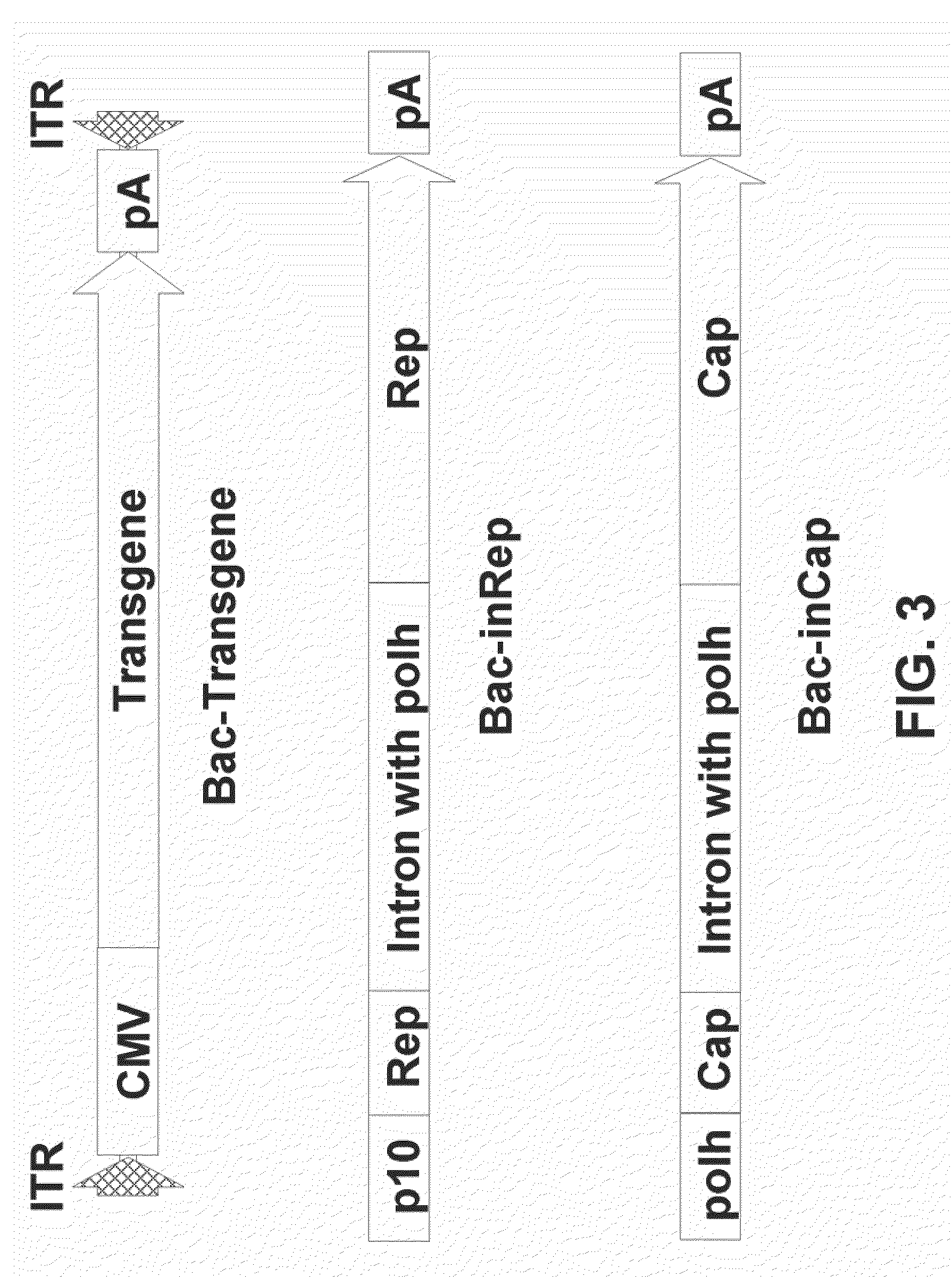Expression in insect cells of genes with overlapping open reading frames, methods and compositions therefor
a technology of insect cells and genes, applied in the field of insect cell gene expression with overlapping open reading frames, can solve the problems of contaminated vectors destined for clinical use produced in mammalian cell culture, no insect gene, either naturally occurring or artificial, and the inability to scale up raav production using current mammalian cell production systems
- Summary
- Abstract
- Description
- Claims
- Application Information
AI Technical Summary
Benefits of technology
Problems solved by technology
Method used
Image
Examples
example 1
[0086]This example demonstrates that a single nucleic acid comprising a AAV2 Rep coding sequence and an artificial intron comprising the polh promoter can express both Rep78 and Rep52 proteins.
[0087]In these experiments, an artificial intron comprising the polh promoter was designed using similar splicing donor and acceptor sequences as reported by Chisholm and Henner J Virol. 62(9):3193-3200 (1988). An artificial intron (SEQ ID NO: 1) is inserted into the Rep78 sequence such that the Rep52 mRNA is transcribed from the polh promoter located inside the artificial intron, whereas the Rep78 pre-mRNA is transcribed from the p10 promoter located upstream from the Rep78 start codon. Upon removal by splicing of the artificial intron by the host cell, mature Rep78 mRNA is formed (FIG. 1). In these experiments, the artificial intron was inserted between nucleotides 850 and 851 according to standard numbering of the AAV genome (available on the internet at http: / / www.ncbi.nlm.nih.gov / entrez / v...
example 2
[0090]This example demonstrates that a single AAV2 Cap coding sequence comprising the artificial intron comprising the polh promoter can express VP1, VP2, and VP3 proteins.
[0091]The ORF located at the right side of the wild-type AAV genome codes for three overlapping capsid proteins, VP1, VP2, and VP3. In mammalian cells, these capsid proteins are synthesized from two spliced mRNAs arising from the p40 promoter. One message is translated into VP1, while another transcript encodes VP2 and VP3. The naturally occurring initiation codon for VP2 is ACG, which is poorly utilized, resulting in ribosome scanning through to the VP3 initiation codon (AUG). The alternate usage of two splice acceptor sites and the poor utilization of ACG initiation codon for VP2 are responsible for the stoichiometry of VP1, VP2, and VP3 in AAV2-infected mammalian cells and mirrors the protein ratio in the capsids, 1:1:10. The AAV cap intron is not spliced in insect cells.
[0092]In order to express all three caps...
example 3
[0093]This example demonstrates that by using the same design of artificial intron, VP1, VP2, and VP3 proteins can be expressed from AAV8, AAV6, and AAV1 serotypes.
[0094]The same artificial intron as used in examples supra was inserted into the Cap coding sequence of AAV serotype 8 between nucleotides 2145 and 2146 (accession no. NC—006261) wherein the nucleotide sequence 2141-2150 is tccagattgg (SEQ ID NO: 28), AAV serotype 6 between nucleotides 2232 and 2233 (accession no. NC—001862), wherein nucleotide sequence 2231-2240 is agattggctc (SEQ ID NO: 32), and AAV serotype 1 between nucleotides 2247 and 2248 (accession no. NC—002077), wherein nucleotide sequence 2241-2250 is cttccagatt (SEQ ID NO: 29, see Example 2). To construct pFBD-inCap8 and pFBD-inCap6, the artificial intron was amplified by PCR from pFBD-inCap using primers 5′-ATGCCCTCAGAGAGGTTGTCCTCGAGCCAATCTGAAACAAT-3′ (SEQ ID NO:21) and 5′-CCCGGTACCGCATGCTATGC-3′ (SEQ ID NO:22). The amplification product was digested with Eco...
PUM
| Property | Measurement | Unit |
|---|---|---|
| volume | aaaaa | aaaaa |
| nucleic acid cassette | aaaaa | aaaaa |
| nucleic acid | aaaaa | aaaaa |
Abstract
Description
Claims
Application Information
 Login to View More
Login to View More - R&D
- Intellectual Property
- Life Sciences
- Materials
- Tech Scout
- Unparalleled Data Quality
- Higher Quality Content
- 60% Fewer Hallucinations
Browse by: Latest US Patents, China's latest patents, Technical Efficacy Thesaurus, Application Domain, Technology Topic, Popular Technical Reports.
© 2025 PatSnap. All rights reserved.Legal|Privacy policy|Modern Slavery Act Transparency Statement|Sitemap|About US| Contact US: help@patsnap.com



